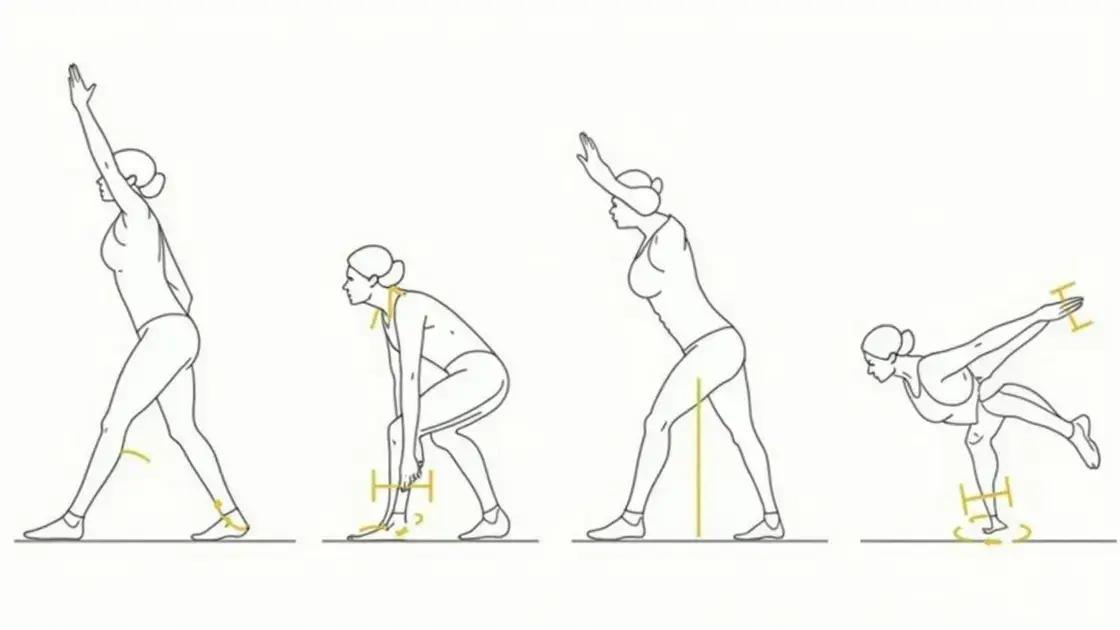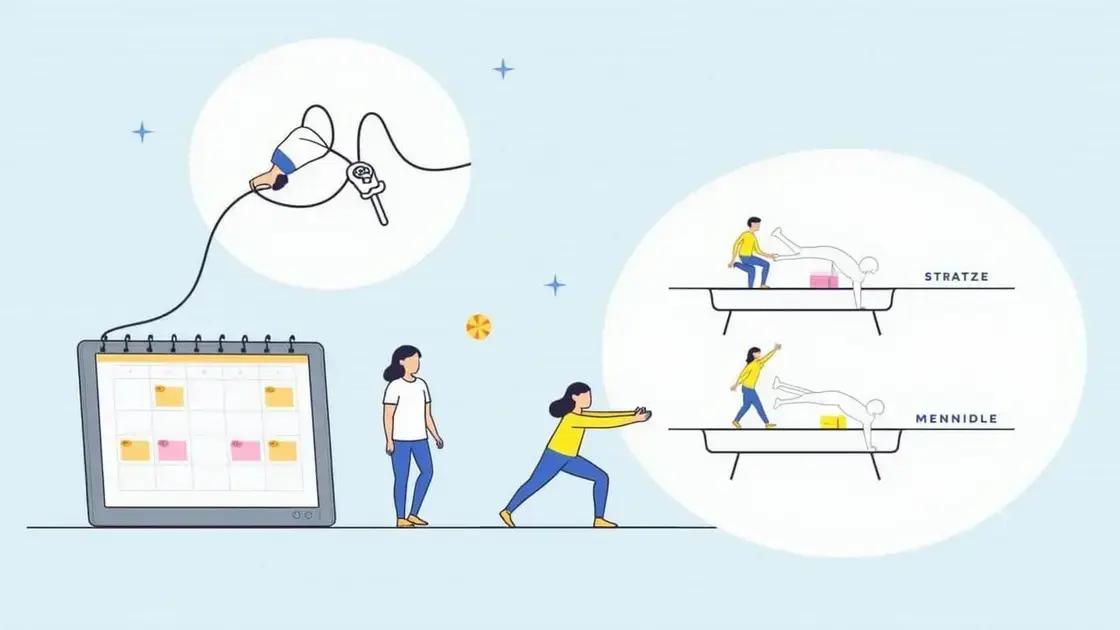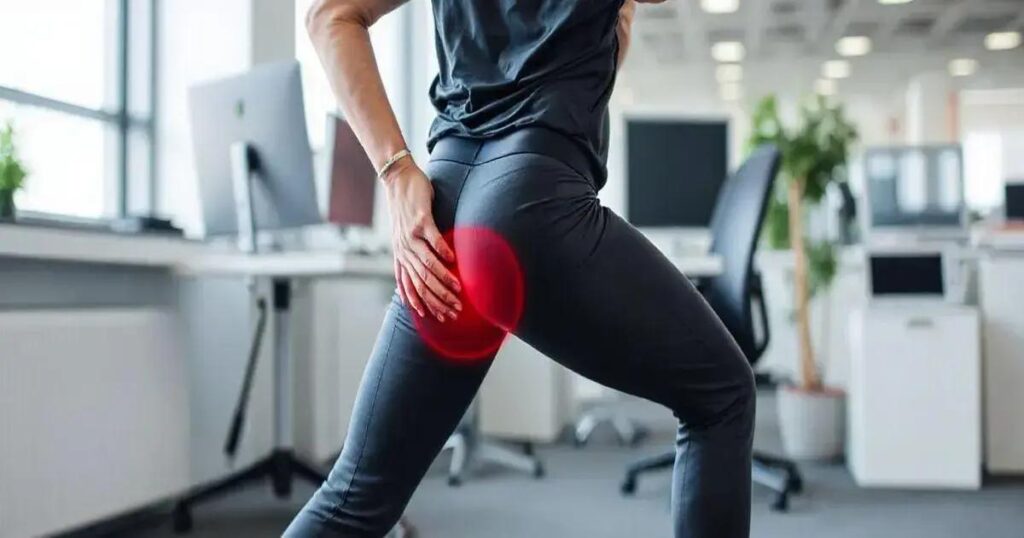The importance of hip flexor stretches after sitting cannot be overlooked, as they help relieve tightness, improve flexibility, alleviate discomfort, and enhance overall mobility, making them essential for those with sedentary lifestyles.
Sitting for long periods can lead to tight hip flexors, causing discomfort and mobility issues. Hip flexor stretches are essential for counteracting the effects of prolonged sitting. These stretches not only enhance flexibility but also alleviate tension in the hips and lower back. In this article, we will discuss what hip flexors are, the benefits of stretching them, effective stretches, and tips for incorporating these stretches into your daily routine.
What Are Hip Flexors?

Hip flexors are a group of muscles located at the front of the hip. They connect your upper body to your lower body, enabling movement in the hips and legs. These muscles include the iliopsoas, rectus femoris, and sartorius. When you sit for long hours, these muscles can become tight and shortened.
When we talk about the importance of hip flexors, it is crucial to understand their role in everyday activities. They help with walking, running, and even standing. When they become tight from prolonged periods of sitting, it can lead to discomfort and strain in the lower back.
The iliopsoas is the primary hip flexor and is vital for stabilizing your spine and posture. It plays a significant role in bending your hips and lifting your legs. Maintaining flexible hip flexors is essential for overall mobility and can enhance performance in physical activities.
Similarly, tight hip flexors can lead to an imbalance in your posture. It can also affect your gait, leading to potential injuries if left unaddressed. Understanding what hip flexors are and their function is the first step in recognizing why stretching them is important, especially after long periods of sitting.
Benefits of Stretching Hip Flexors

Stretching your hip flexors offers numerous benefits that help improve your overall health and mobility. One primary benefit is increased flexibility. When hip flexors are stretched regularly, they become more pliable, allowing for a greater range of motion in the hips. This flexibility is crucial for activities like walking, running, and dancing.
Another significant benefit is the reduction of discomfort and pain. Tight hip flexors can lead to lower back pain and discomfort in the hips. Stretching helps alleviate this tension, providing relief and promoting better posture.
Improving posture is another advantage of stretching hip flexors. When hip flexors are tight, they can pull your pelvis forward, leading to an exaggerated curve in your lower back. By stretching these muscles, you can maintain a more neutral spine alignment, which is essential for good posture.
Additionally, stretching hip flexors may enhance athletic performance. For athletes, greater flexibility can improve overall performance in various sports. Being more limber enables quicker movements, better agility, and less risk of injury during physical activities.
Lastly, stretching can also be relaxing. Taking the time to stretch your hip flexors can help reduce stress and tension in your body, contributing to overall mental well-being.
Effective Hip Flexor Stretches

Many effective hip flexor stretches can help relieve tension and improve flexibility. Here are some of the best stretches you can try:
1. Lunging Hip Flexor Stretch: Start in a standing position. Step forward with your right foot into a lunge. Keep your left knee on the ground. Push your hips forward to feel the stretch in your left hip flexor. Hold for 20-30 seconds and switch sides.
2. Butterfly Stretch: Sit on the floor with your feet together and knees bent out to the sides. Gently press your knees toward the ground with your elbows. This stretch opens your hips and eases tension. Hold for 20-30 seconds.
3. Pigeon Pose: Begin in a plank position. Bring your right knee forward to your right wrist, laying your shin on the ground. Extend your left leg back. This stretch targets the hip flexors deeply. Hold for 20-30 seconds and switch sides.
4. Standing Quad Stretch: While standing, grab your right ankle with your right hand, pulling it toward your glutes. Keep your knees close together to feel the stretch in your hip flexors and quadriceps. Hold for 20-30 seconds and switch sides.
These stretches can easily be included in your daily routine. Doing them after sitting for long periods can significantly improve your flexibility and reduce discomfort.
Tips for Incorporating Stretches into Daily Routine

Incorporating hip flexor stretches into your daily routine can be easy and beneficial. Here are some practical tips:
1. Set a Reminder: Use your phone or calendar to set daily reminders to stretch. This can help you create a consistent habit of stretching after sitting for extended periods.
2. Stretch During Breaks: Take short breaks every hour to stand up and stretch. You can do quick hip flexor stretches at your desk or in the break room. Even a minute can make a difference!
3. Pair with Other Activities: Incorporate stretches into activities you already do. For example, stretch while watching TV or during a phone call. This way, you won’t feel like stretching is another task you have to complete.
4. Create a Routine: Develop a stretching routine that you follow daily. You could include 5-10 minutes of stretches first thing in the morning or right before bed to relax your body.
5. Use Online Resources: Find videos or apps that guide you through hip flexor stretches. Visual aids can help ensure that you perform the stretches correctly and effectively.
By following these tips, you can easily make hip flexor stretches a regular part of your life, ensuring better flexibility and comfort!
Incorporating Hip Flexor Stretches into Your Life
The importance of hip flexor stretches after sitting cannot be underestimated. By understanding what hip flexors are and the benefits of keeping them flexible, you open the door to improved mobility, reduced discomfort, and better overall health.
Effective stretches like the lunging hip flexor stretch and pigeon pose can play a significant role in relieving the tension that develops from prolonged sitting. Coupled with practical tips for integrating these stretches into your daily routine, you can easily make stretching an essential part of your life.
Ultimately, regular stretching of your hip flexors will lead to a more comfortable, active, and ultimately healthier lifestyle. So take charge of your flexibility today by incorporating these simple yet effective stretches into your regimen!
FAQ – Frequently Asked Questions About Hip Flexor Stretches
What are hip flexors?
Hip flexors are a group of muscles located at the front of the hips that help connect the upper body to the lower body, enabling movement.
Why are hip flexor stretches important?
Hip flexor stretches are important because they alleviate tightness and discomfort caused by prolonged sitting, improving overall mobility and posture.
What are some effective hip flexor stretches?
Effective hip flexor stretches include the lunging hip flexor stretch, butterfly stretch, pigeon pose, and standing quad stretch.
How often should I stretch my hip flexors?
It is recommended to stretch your hip flexors daily, especially after long periods of sitting, to maintain flexibility and reduce tension.
Can stretching improve athletic performance?
Yes, stretching your hip flexors can enhance athletic performance by increasing flexibility, agility, and reducing the risk of injury during physical activities.
How can I easily incorporate stretches into my daily routine?
You can set reminders, stretch during breaks, pair stretches with daily activities, or follow online resources to make stretching a habit.













